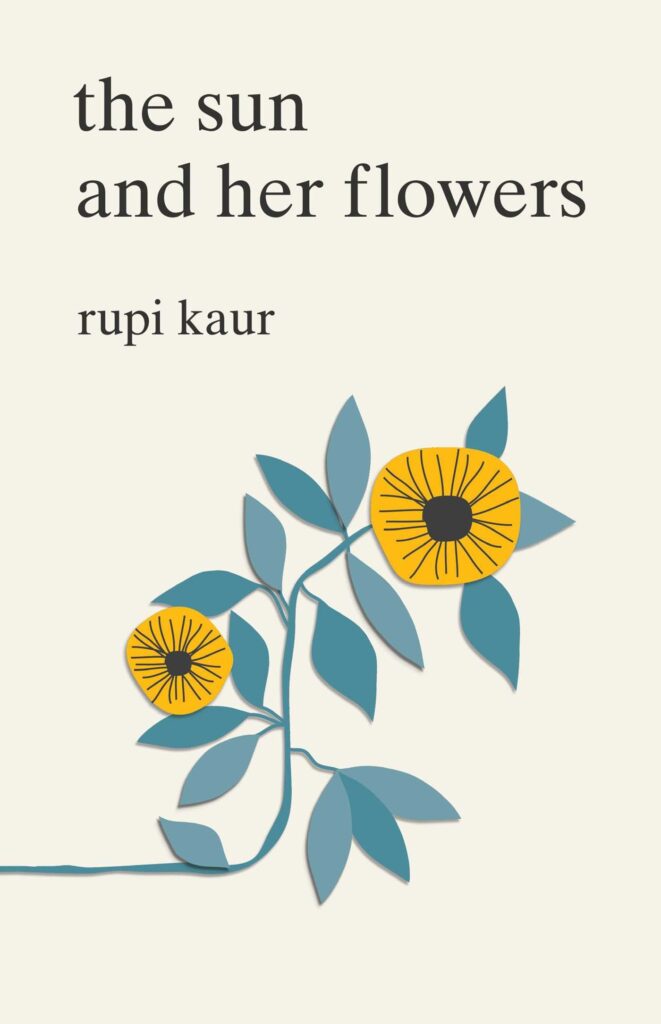The Sun and Its Flowers (shaped like the sun and its flowers) is the second collection of poems, by Rupi Kaur, published in 2017. It is compiled of five chapters, with illustrations by the author. Rupi Kaur (born 4 October 1992) is a Canadian-born poet, artist, writer, and writer. Kaur rose to fame on Instagram and Tumblr by sharing his short visual poems. She has gained worldwide popularity, following the publication of her first book Magic, Milk, and Honey.
Which went on to sell over 2.5 million copies worldwide and spent more than a year on the New York Times Best Seller list. In 2017, Kaur released her second book, The Sun and Her Flowers, leading to her named in the BBC’s 100 Women of the Year 2017. Her work explores relationships, immigrant experiences, and sexual violence and looks to be at the forefront of Insta-poetry. In 2019, the new Republic named Kaur the “Writer of the Year.

The Sun and Its Flowers is a collection of poems in five parts by Rupi Kaur. These five sections trace Kaur’s journey of self-love and self-empowerment. Culminating in Kaur’s statement, “there is nothing left to worry about because the sun and its flowers are here” (248). Kaur’s collection begins with a section called wilting. In which Kaur comes to terms with his now extinct relationship with his former lover. Throughout the “love affair”, Kaur deals with self-hatred, depression, and loneliness, unable to continue his past relationships. At the end of the “cremation.”
Kaur decides that he must continue, so, it begins the journey that will continue throughout the Sun and its flowers. In the “fall,” Kaur looks at his past, not only looking at the consequences of his most recent relationship to him. But also the consequences of his childhood and past experiences. Most notably, Kaur relates the story of how he was raped as a child, explaining how the tragedy affected him. As the “fall” continues, Kaur progresses to his goal of self-love and self-empowerment by searching for the past. In “rooting.”
Kaur’s exploration of his fate continues, as he views his parents’ experiences as aliens. How difficult it must be to move from both. In this section, Kaur emphasizes the nature of confessional poetry and that of political poetry. Moreover, offering ideas about refugee and immigration problems at present. Towards the end of “rooting”, Kaur begins to talk about his relationship again. His voice becomes more confident and confident. In “The Departure,” Kaur talks about his newfound love with another partner, which helps him overcome his past relationships and learn to love him. In this section.
Kaur’s poems emphasize the sexual aspect of his new relationship, talking about the need to love the human body more directly than to love other aspects of it. In “blossom,” Kaur comes to the end of his journey to self-love and self-acceptance. Kaur says that each of his students also needs to take the trip, encouraging his students to start exploring their history and get to a place of self-love and content. “In bloom,” Kaur encounters persistent themes throughout the Sun and her flowers: cycles of healing, self-love, immigration, physical intimacy, and the empowerment of women.











